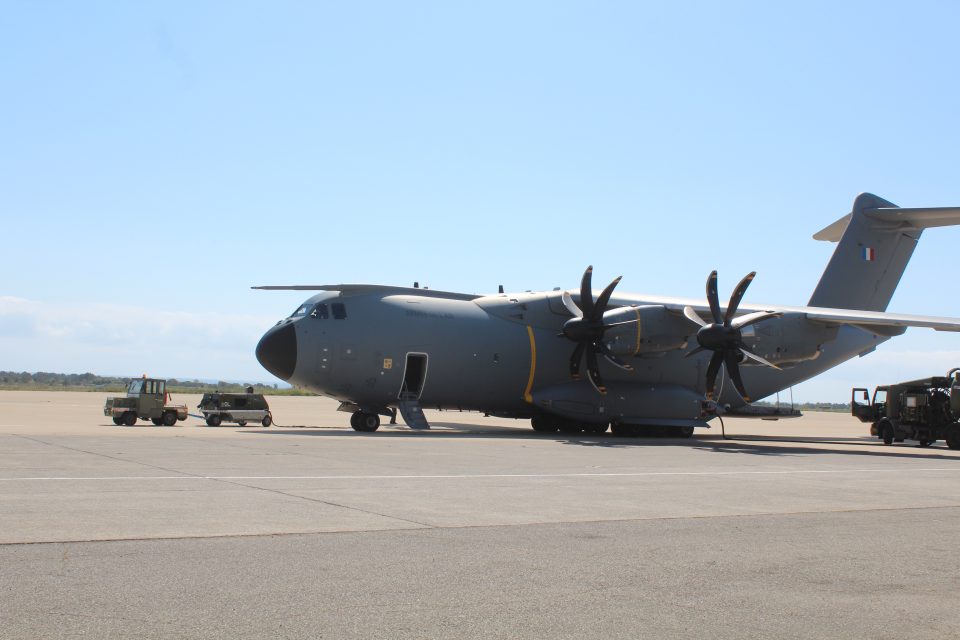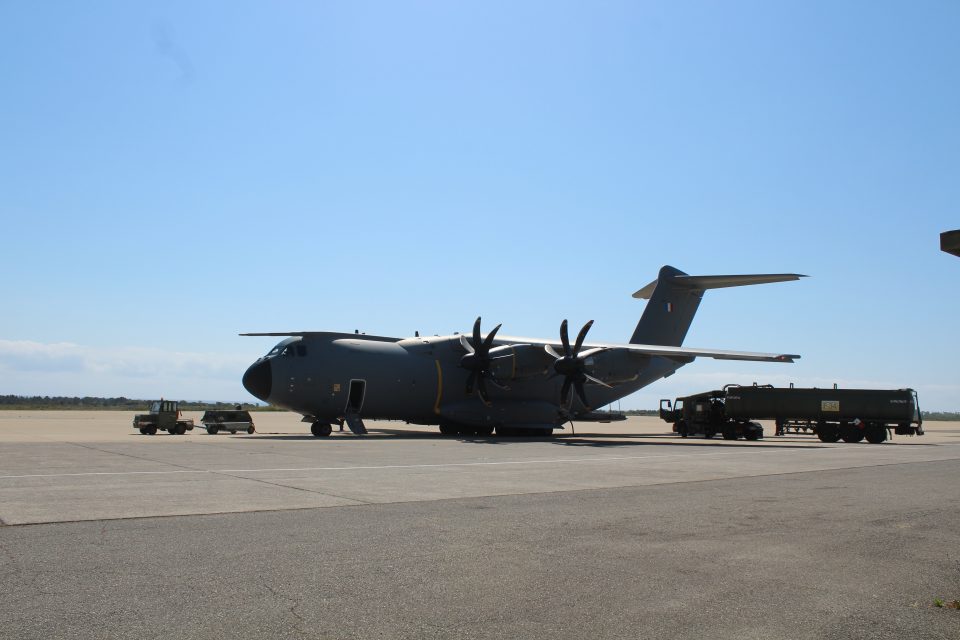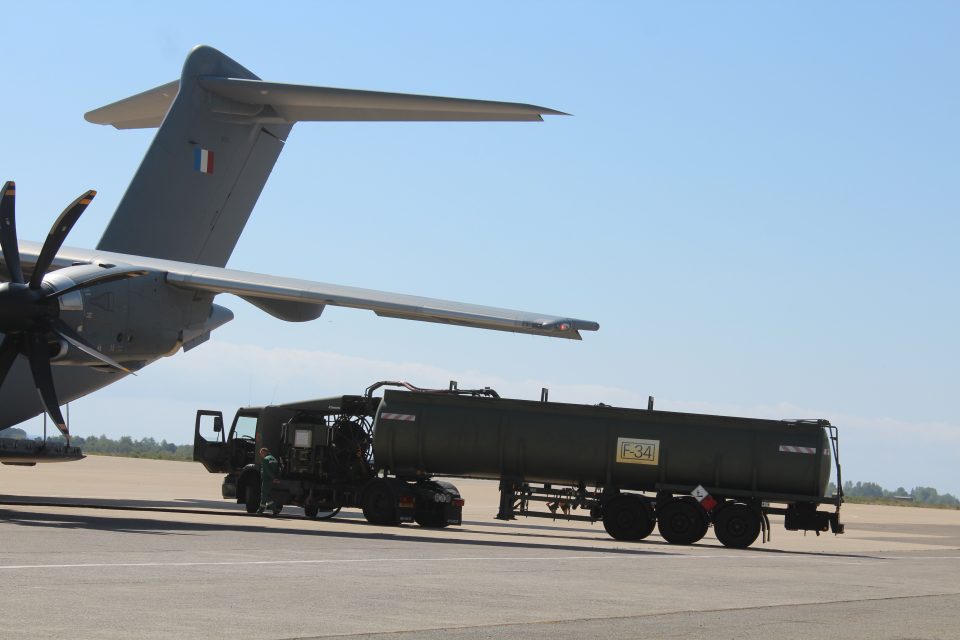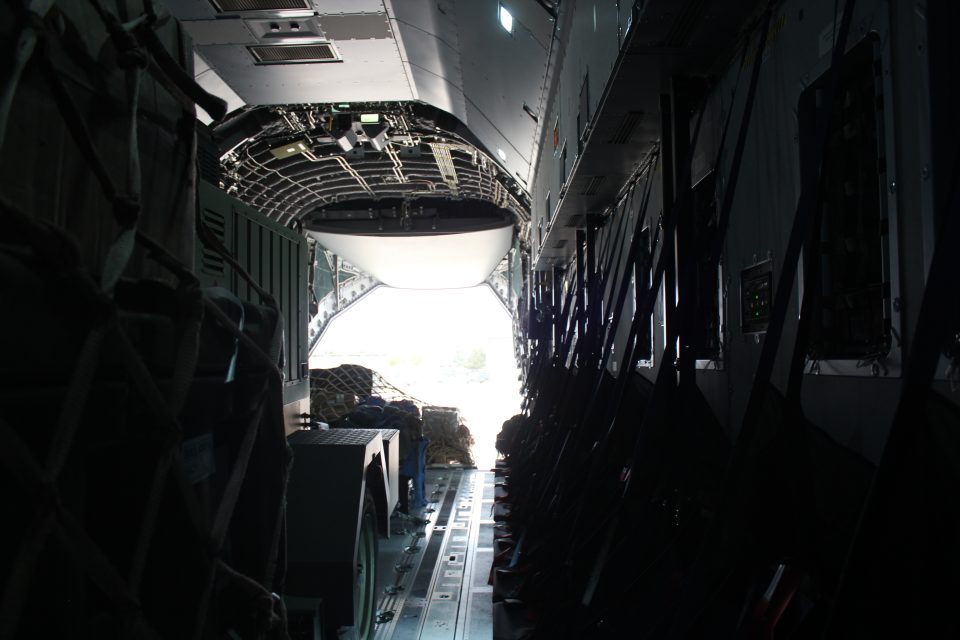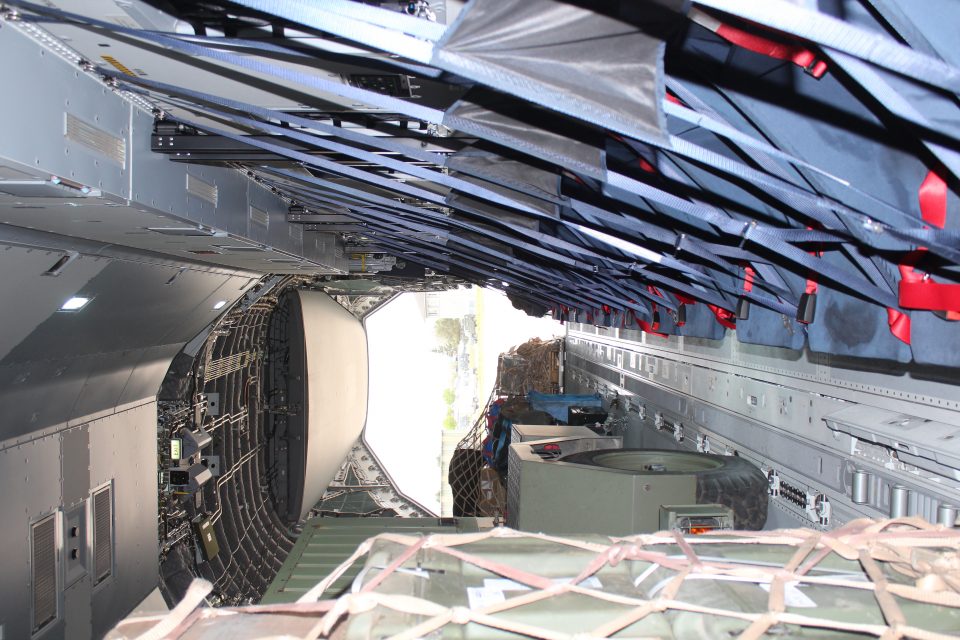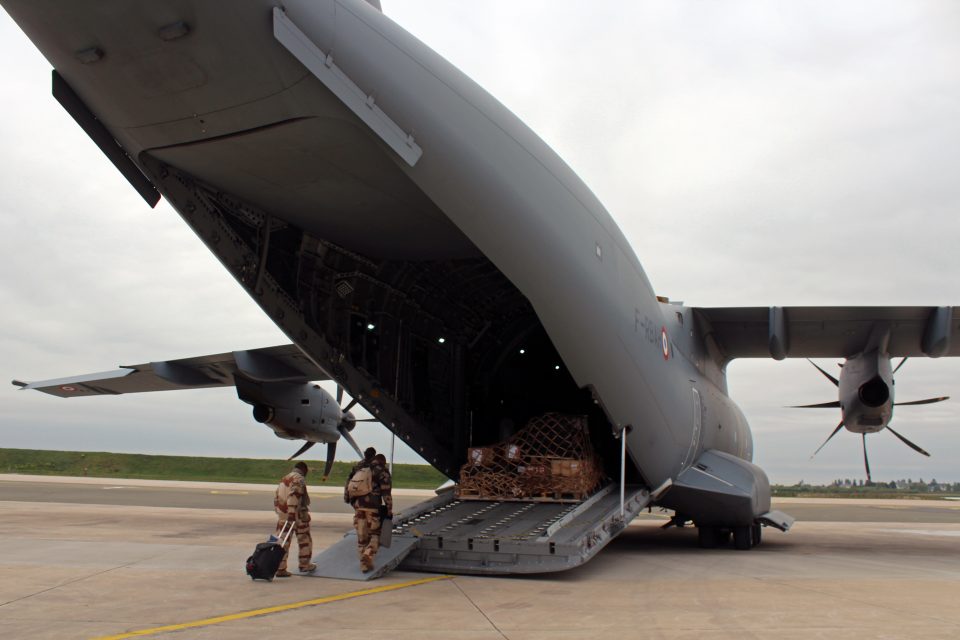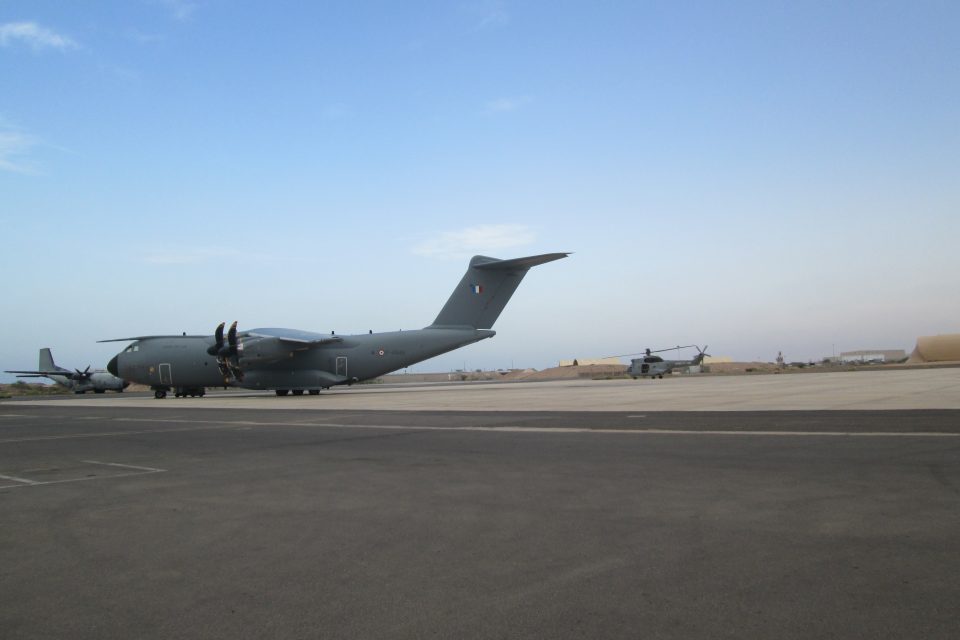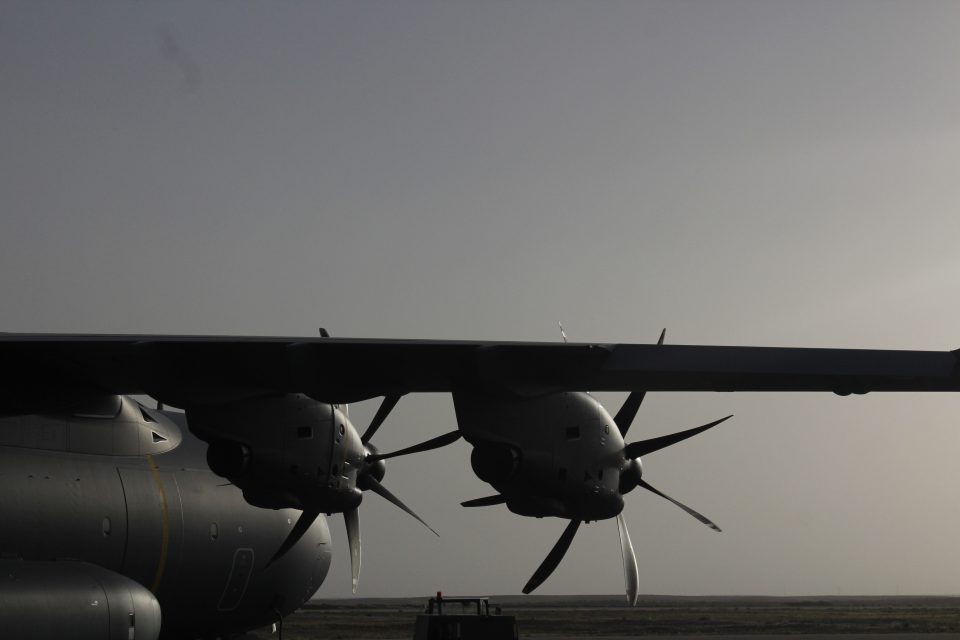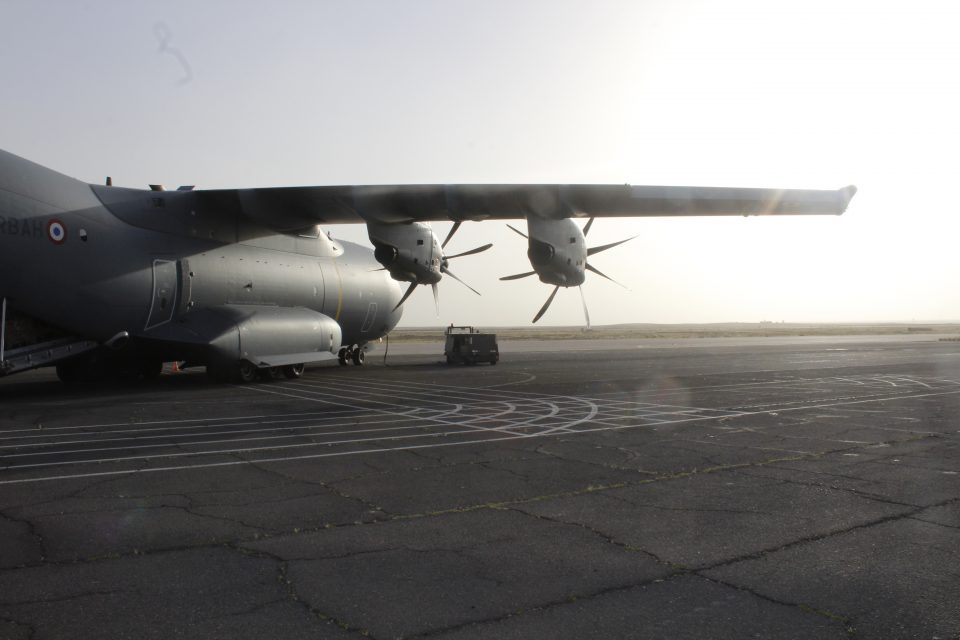2017-08-31 By Murielle Delaporte
Former Transall (C160) pilot and “Touraine” Transport Squadron, Captain Cyril is currently in charge of operations within the 61st Wing at Orléans Air Base.
This wing was specifically created for the arrival of the A400M.
This interview was done onboard the MSN 31 last Spring while in route to the Inherent Resolve theater of operation, which for the French forces is the Chammal operation,
The interview underscores two key developments with regard to the A400m.
First, the aircraft has matured in terms its availability rates and its capabilities.
Second, the skills and training of the crews to work with the new aircraft are maturing as well.
Question: Captain, how would you describe today’s mission and how does today’s flight differ from past ones onboard older generation transport aircrafts?
Captain Cyril: Starting in Orléans, this flight is quasi-weekly and ensures a regular shuttle towards the United Arab Emirates, Jordan and Djibouti.
We must for instance during this week’s trip replace a Mirage 2000 engine and deliver a generator as well as various pallets.
We also bring military personnel back and forth between the theater of operation and home.
We have left with 39 passengers and we shall be 50 people onboard on the way back.
The fact that we are able to carry up to 50 passengers and a total of nine pallets constitutes the very first change between the A400M and the C130 (Hercule) or C160 (Transall).
With those aircraft, we would have had to make a compromise between the number of passengers and the number of pallets.
The freight deck of the A400M is the very first advantage of the aircraft on many grounds: the hold itself is one thing, but it is also much easier and faster to safely load and unload even very heavy equipment, such as helicopters or, as it happened recently, the 35 ton land vehicle VBCI (“véhicule blindé de combat d’infanterie”).
The plane remains stable, the ramp does not break thanks to improved physical support systems, as well as a whole new generation of software on which the loadmasters can now rely in order to best calculate the loads and switching them around depending on each stopover’s requirements.
This allows us to save a lot of time, and therefore a lot of money, since military equipment is being immobilized for shorter periods of time, while the cost of stopping over (taxes; crew lodging and pay; etc) is reduced as well.
It takes now about the same time to prepare the plane for its next flight at a stopover in terms of flight planning, cargo loading and the mechanics checks, i.e. roughly an hour (depending of course on the load).
The digitalization of the plane has already had a tremendous impact in terms of training and the definition of job profiles for the coming generations.
For both pilots and maintainers, the learning curve and gain in autonomy have been accelerated, since everything and every single mission are digitally archived.
If a mistake is made, no need to start all over and recalculate it all by hand: the time saved in mission planning is tremendous as well.
Another key change is a transfer of tasks within the crew because of the evolution of maintenance and the digital dialogue being established.
In case of a serious breakdown, the aircraft is repaired by military maintainers in Orléans or at the Airbus plant or onsite with spares sometimes being flown by Airbus and a team of mechanics coming especially.
That means that the role of flying mechanics have now been reduced to mainly a loadmaster function with a console located in the freight deck, while the pilots on the other hand learn to decrypt the diagnostics the machine hands out to them in the cockpit.
The mechanics part of the job is less and less “flying” and onboard or in transit anymore, but at the mother-base.
We closely work with Airbus in order to pool scarce resources and enhance readiness that way.
QuestionL What is the readiness rate of the A400M and which capabilities is the French Air Force using at the moment?
Captain Cyril: Ever since the beginning, the A400M been used on theater of operations.
It is a matter of priority and the way things are being traditionally done in the French armed forces.
[As of April 2017], we juggle with eleven aircrafts, eight of them being based in Orléans.
The one we are flying right now is the MSN 31, which is relatively recent compared to the very first MSN7 and 8.
It is never the same A400M which does the same shuttle.
Starting with the MSN 30, we now expect a certain standard: what changes is the opening our aperture towards new capabilities.
We are currently working for instance on certifying the aircraft airdrop capabilities for equipment (first) and paratroopers (second).
Because this is a new field for Airbus, we have been establishing a dialogue in order to proceed with performance calculus tests as well as the implementation of the right proceedings.
Whenever we need to test live, we usually go to Toulouse along with the French Army military units in charge of airdropping equipment, i.e. the 1er RTP (“Régiment du Train Parachutiste”).
As far as airdropping paratroopers, if all is working fine for commando jumps from the rear of the plane, we are still working with the constructor to sort out initial issues that were encountered for lateral automatic jumps.
These issues are in actual fact the other side of the coin of the great stability and maneuverability of the A400M, since the counter-rotor propellers generate an air cushion under the plane and therefore turbulences that can be fatal for the jumpers.
We have hence been working out what type of procedure and equipment – such as the length of the opening belt, trigger time of the parachute, etc -.
QuestionL How do you integrate the lessons learned and did you benefit from the Rafale experience in the French fighter world?
Captain Cyril: Lessons learned are all we seem to be doing!
We have ground maintainers at the Orléans Squadron (ESTA) which participate to the implementation of the aircraft and send back all information – sorties statistics; breakdown occurrence; false detection occurrence ; etc – in a formalized standard (so they can be exploited right away) to both the FAF and Airbus.
In the past two years, an enormous effort was accomplished by both the FAF and Airbus, the former to better communicate data, the latter to better improve sensors faulty detection. As a result we have fewer and fewer non-real detected breakdowns.
It is going to take some time since upgrades correcting such issues are very expensive and only take place during specific maintenance visits.
As far as the Rafale learning curve goes, it is important to stress that from the beginning on pilots from all horizons – Casa, Hercule, Transall, Airbus, Falcon, fighter jets – were assigned to this program.
Some pilots indeed knew how to fly in a threatened environment for tactical approaches and landing on tough terrain; others were familiar with datalinks (such as Link16).
This changed the whole picture.
As a matter of fact, our squadron Commander was initially a Rafale mechanic and had a much more relaxed attitude with regard to the small breakdowns that occurred.
He was not astonished, but rather pleasantly surprised at the relatively fast rate of improvement.
Such a cultural mix is very rewarding as it allows us to closely work with the industrial to fine-tune the man-machine interface.
Computers talk to us, but we need to be able to act on it, especially since updates and evolutions are frequent and there is still a lot we need to discover about the plane’s potential.
A great amount of work as far as standardization and training are concerned still needs to be done.
It is obvious that we cannot all train for all offered capabilities all at once.
The goal is therefore to go bit by bit, deepen the understanding of matters considered high priorities, set up the training syllabus for our transport crew instruction center, the CIET (“Centre d’instruction des équipages transport”), in order to deliver on time and transfer trained and certified transport crews to our “Touraine” Transport Squadron.
It is the same process no matter what the new program is, but when several new capabilities arrive simultaneously, it is necessary to tailor the training curriculum depending on what are the armed forces’ priorities.
Question: As an operational transport pilot, how would you compare tactical approaches when flying a Transall or when flying an A400M?
Captain Cyril: This plane is a like big toy: it is extremely maneuvering and powerful.
It is very reactive to commands.
The general feeling is rather different than flying a Transall, because the flight commands are electrical.
The generation gap is visible even in the way we do maneuver.
When you are in a “degraded situation” [threatened environment], it is not so simple to fly 130 tons with accuracy.
Piloting aids are really very precise and non-intrusive.
And because the plane self-compensates, if I put it in a certain position, it will hold it even without automatic pilot.
The same goes when diving: if I make sure, I place the plane in the right descending angle at the right moment, then it will also holds it with barely any correction.
That was never the case with former generation transport aircrafts, which needed more adjustments.
If we did import all these flying tools from the civilian world, it is, on the other hand, the only certified plane with the HUD (Head Up Display) as a primary pilot tool.
The HUD, traditionally used by fighter pilots is the trusted instrument to fly the plane, and that has never been done before.
It is indeed extremely practical to be able to fly the aircraft, while having a view of what is going on outside.
It adds a whole new level of safety.
On more conventional aircrafts, we descended “head down” looking at the instruments and occasionally we would go “head up” to acquire a visual of our landing zone in the fog or in the midst of clouds.
Heading up and down is unpleasant when flying at night, because of the big light variations. Air France is actually quite interested in this way of working “Head Up”, that we initially inaugurated on our Transalls as a piloting aid.
Question: What kind of international exchanges are there among A400M end-users?
The French Air Force is ahead as far as using the plane is concerned, since we were first to be delivered.
We are for instance currently working with a Spanish Air Force exchange pilot, who is onboard with us.
We also have a German officer at the CIET, as well as a German maintainer within the ESTA.
These exchanges last three years and every procedure is being done in English.
The plan is for ab initio logistics training to be implemented in Germany and for pilots’ final tactical training to be done in France.
As far as maintenance goes, we are also trying to develop a common pool of spares with the British within the framework of a bilateral agreement, as some of these parts are rather expensive.
Editor’s Note: The photos in the slideshow were shot during the operation by Murielle Delaporte last Spring.
The delivery of the first A400M to the Spanish Air Force is highlighted in the video below:
Inherent Resolve and the A400M: Providing a Regular Shuttle Capability



